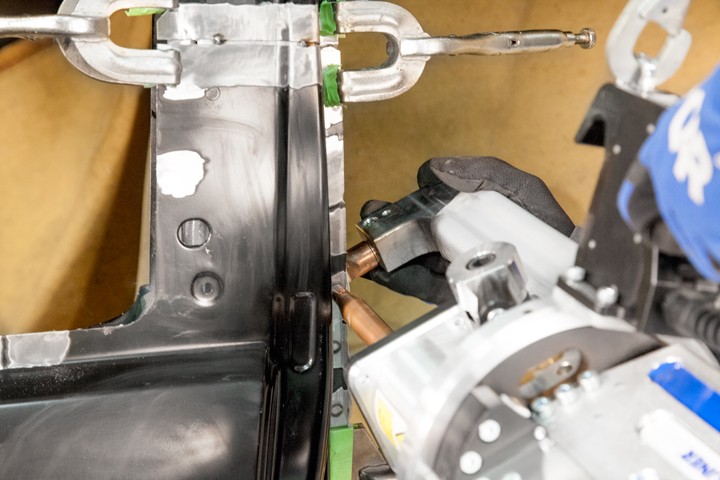 Technician disconnecting a high voltage cable
Technician disconnecting a high voltage cable
Welding on a hybrid or electric vehicle (EV) requires specific OBDII precautions to prevent damage to the vehicle’s electrical system and ensure the safety of the technician. While similar precautions for the 12-volt system apply as with conventional vehicles, the high-voltage battery in EVs necessitates additional steps. This article outlines essential safety measures to take before welding on these vehicles.
Disconnecting Power Sources: A Critical First Step
Before initiating any welding procedures, disconnecting both the 12-volt battery and the high-voltage battery service disconnect is paramount. This crucial step eliminates the risk of electrical shocks, fires, and damage to sensitive electronic components. Always consult the vehicle manufacturer’s repair information for the specific disconnection procedures for the high-voltage system. There may be multiple methods available, but removing the service disconnect is generally the preferred method for repair technicians.
Safeguarding Against Accidental Reconnection
After disconnecting power sources, it’s crucial to prevent accidental reconnection. A simple yet effective practice is to keep any removed fuses, relays, or service disconnect plugs in your pocket. This ensures that no one can inadvertently reinstall them while you’re working, potentially creating a hazardous situation.
Locating Vehicle-Specific Disable Procedures
Vehicle manufacturers provide detailed procedures for disabling high-voltage systems in their repair manuals. However, accessing this information quickly can sometimes be challenging. Resources like the I-CAR developed OEM Hybrid and Electric Vehicle Disable Search can help locate these procedures efficiently, ensuring you have the correct information for the specific vehicle you are working on.
Grounding and Other Safety Considerations
Proper grounding techniques are essential when welding on any vehicle, especially EVs. Ensure a strong ground connection to the vehicle’s chassis, away from the high-voltage battery and its components. This helps prevent electrical current from flowing through unintended paths, minimizing the risk of damage. Additionally, always wear appropriate personal protective equipment (PPE), including welding gloves, a welding helmet, and flame-resistant clothing.
Verifying System Disablement
After following the disconnection procedures, it is crucial to verify that the high-voltage system is completely disabled. Some vehicles may have indicator lights or warning systems that confirm the system is off. Consult the vehicle manufacturer’s repair information for specific verification methods. Never assume the system is disabled without proper confirmation.
Conclusion: Prioritizing Safety and Preventing Damage
Welding on hybrid and electric vehicles presents unique safety challenges due to the presence of high-voltage systems. By meticulously following the outlined OBDII precautions, including disconnecting power sources, safeguarding against accidental reconnection, and consulting vehicle-specific disable procedures, technicians can mitigate risks and prevent damage to the vehicle and themselves. Remember, prioritizing safety is crucial when working with these advanced vehicles. Always refer to the manufacturer’s repair information for detailed instructions and safety guidelines.
